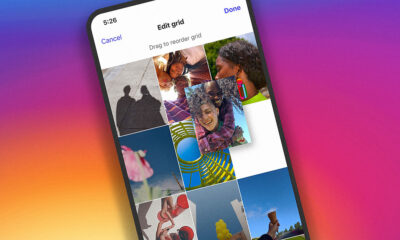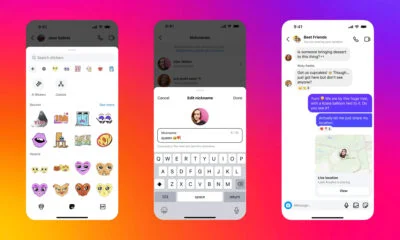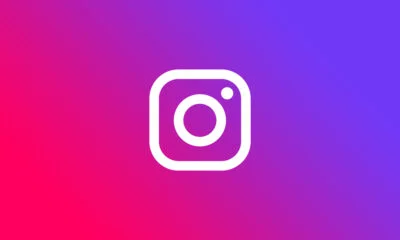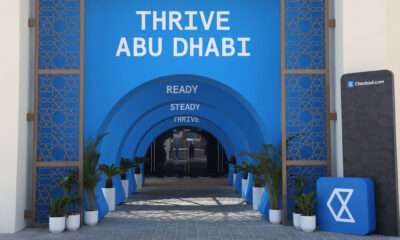News
Instagram Attempts To Dispel Shadowbanning Conspiracies
The Meta-owned company wants creators to better understand how the platform’s algorithms work.

A new blog post by Adam Mosseri — Instagram’s top exec — has offered some of the most detailed explanations about how the platform’s algorithm ranks various recommended content in a bid to dispel conspiracy theories concerning shadowbanning.
“Instagram doesn’t have a singular algorithm that oversees what people do and don’t see on the app,” explained Mosseri in his post. Instead, the executive explained that there are several algorithms and ranking systems working behind the scenes of the Explore, Reels, Stories, and Search sections of the app, with each using different signals for cues as to whether a creator or piece of content should be offered for a viewer’s perusal.
Regarding the order of posts in a user’s main feed, the algorithm uses past viewing activity to determine what to show next, as well as “closeness” and “how likely you are to be connected as friends or family”. On the other hand, Explore recommendations are primarily driven by “posts you’ve liked, saved, shared, and commented on in the past” but are more likely to come from creators or accounts the user has never interacted with.
One of the most interesting parts of Mosseri’s blog post is about “addressing shadowbanning”. Mosseri admits there isn’t a universal definition for the term but acknowledges that some creators “use the term to imply that a user’s account or content is limited or hidden without a clear explanation or justification”. Mosseri says that Instagram is working hard to increase transparency around when content or accounts are hidden from the platform’s recommendations.
Also Read: Adobe Firefly AI Image Generator Comes To Photoshop
Mosseri notes that the “account status” feature will alert users if their content or entire account is considered “ineligible” for recommendations and that an appeals process is also available. While this isn’t the first time Instagram has addressed shadowbanning, there has been a noticeable shift in how the company talks about the topic.
The new details from Adam Mosseri’s blog underscore just how vital algorithm recommendations are to Instagram’s operation. Meta chief Mark Zuckerberg has even said that his goal is to transform both Instagram and Facebook into “discovery engines” focused on recommendations rather than posts from friends.
News
Influencer Growth Fuels Saudi Creator Economy Surge
The Kingdom’s creator economy grew over 32% in Q1 2025, fueled by TikTok, UGC, and cost-per-action (CPA) influencer models.

Saudi Arabia’s creator economy saw a significant 32.37% growth in the first quarter of 2025, driven by an uptick in influencer marketing, content-driven e-commerce, and the increasing influence of user-generated content (UGC). These insights come from a recent study by Admitad and the Stllr Network.
Much of this momentum is coming from video-based platforms, where brands are leaning on creators who feel more relatable than polished ad campaigns. The trend shows a clear preference for authenticity, as audiences gravitate toward content that feels real and personal.
Mohannad Alzahrani, Co-founder and VP KSA of Stllr Network, highlighted the shift: “The rise of user-generated content (UGC) is changing the way brands engage with consumers. Audiences trust real creators more than traditional advertising, making UGC a key driver of authenticity and sales”.
TikTok remains the dominant platform in this space, reportedly reaching 88% of the Saudi population. It also showed the sharpest rise in influencer-led transactions. Other platforms followed with solid, if less dramatic, growth: X was up 17%, Instagram increased by 12%, and Telegram by 10%.
In terms of content niches, beauty led the pack with a 56% growth rate, followed by lifestyle at 45.8% and fashion at 18.2%. Tech content also showed healthy traction at 10.6%, while entertainment, food, fitness, parenting, and gaming posted smaller — but still positive — gains.
Also Read: Top E-Commerce Websites In The Middle East In 2025
The report analyzed more than 300,000 influencer-driven purchases. These efforts translated into a 15% year-on-year jump in Gross Merchandise Value (GMV) and a 5% increase in the number of orders in 2024. Influencers themselves are seeing the benefit, with average order values hitting $54 and creator earnings rising by 14%.
A noticeable trend is the move away from fixed-rate deals. More influencers in Saudi Arabia are embracing hybrid compensation models — especially cost-per-action (CPA) setups that tie their earnings directly to performance.
As Anna Gidirim, CEO of Admitad, explains, “The CPA model brings much-needed transparency to influencer marketing. Brands only pay for actual results, and influencers benefit by securing long-term partnerships while offering their audiences exclusive promo codes and special discounts”.
However, the ecosystem still shows a gender imbalance. The data indicates that 63% of creators in Saudi Arabia are men, while women account for just 37%.

























